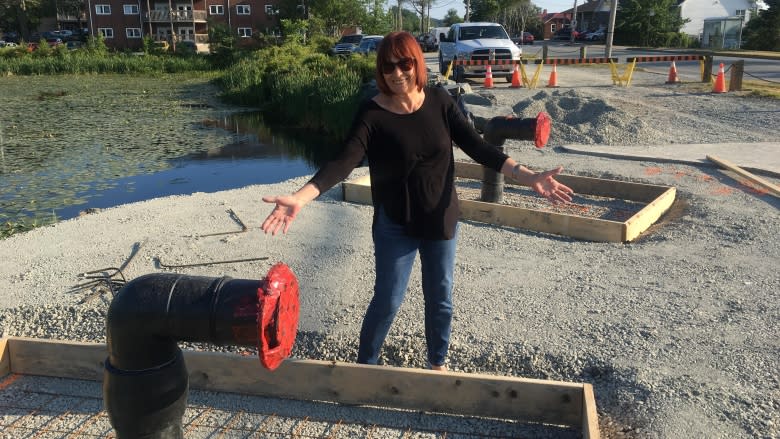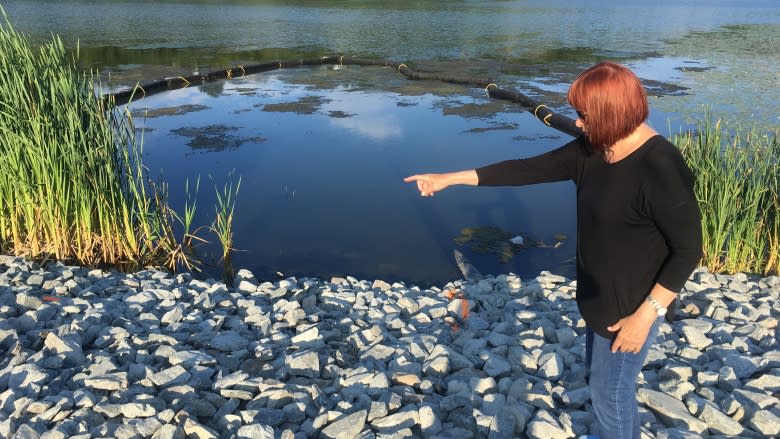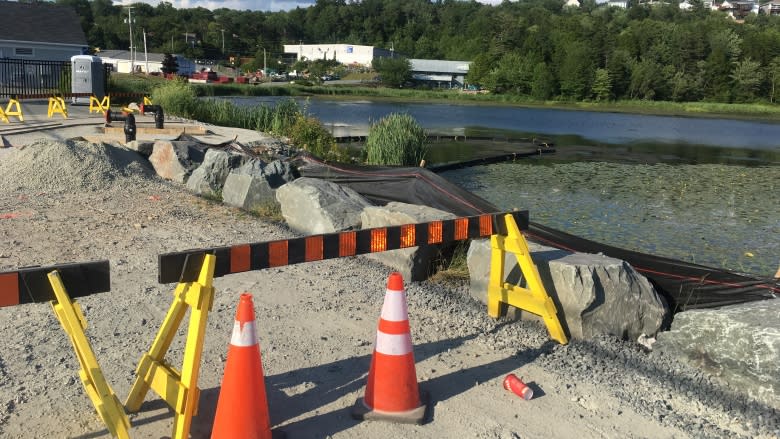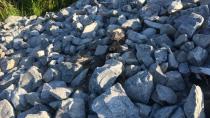Turtle breeding site becomes construction zone in Dartmouth
Halifax municipal workers have built a construction site on top of a snapping turtle nesting area at Red Bridge Pond in Dartmouth, prompting swift action from friends of the province's turtle population.
Turtle Patrol Nova Scotia started two years ago protecting six turtle locations, but last year they covered 273.
Judy MacLean is a Turtle Patrol member and the guardian for Red Bridge Pond, where there are four breeding female snapping turtles.
She has only been a member for a few months, but has already been on a huge turtle rescue mission.
She was at a bus stop on her way to work on July 3 when she saw construction workers at the turtle nesting site she monitors.
'I was horrified'
MacLean said she was afraid the workers would destroy the nests. She said she had worked with others to build protective barriers around them only a few days prior.
"I was horrified. I'm going, 'How do we get these eggs?' We have to stop them. What are we going to do?'"
When she approached the workers she found out they were subcontractors for the HRM. They were installing fire hydrants.
A meticulous mission
The workers tried to avoid the nests on the first day. The Turtle Patrol's night crew arrived and began digging with spoons to save the eggs — a meticulous mission that took about two hours.
The eggs saved were from a turtle MacLean named Pam, after actress Pamela Anderson. The turtle, estimated to be 60 years old, enjoys sunbathing on the rocks near the pond.
Clarence Stevens, co-founder of Turtle Patrol, arrived that evening and said by the time he got there a stake had been driven through one of the nests, destroying a few of the eggs.
Transporting eggs is considered a last option, but it was decided it was the best choice under the circumstances. Approximately 50 saved eggs are now incubating at a wildlife rehabilitation centre.
The next day though, before the group could deal with the remaining nests, the workers buried them under large rocks.
Stevens said those nests are likely destroyed.
"They rely on the sun for incubation, so there's no way the sun can reach them right now. They may have even been crushed under the weight of all those rocks."
Searching for a solution
The group contacted the Halifax Regional Fire and Emergency. Deputy Chief Roy Hollett visited the site.
Hollett said the fire department went through proper procedures and met the environmental requirements to get permission to build at the site.
He said the "dumptruck full of rocks" was unloaded onto the slope near the pond to stop erosion in the area, but Hollett said they plan to move the rocks.
"We're going to come up with a different method to keep it from eroding, yet protect the turtle breeding grounds," he said.
Hollett said contractors removed the large rocks from sensitive areas and, where trucks are parked, paving will be limited during egg-hatching season.
Tony Mancini, councillor for Dartmouth, said he didn't know the pond was a breeding area.
He said he will work with the Turtle Patrol and other environmental groups before starting future projects.
Long-term damage?
Stevens said the group was able to contain some of the damage done at the construction site, but the biggest loss would be losing the habitat in the long run.
Female snapping turtles return to the same breeding site their entire lives, said Stevens. He wants to make sure that the four turtles return despite everything that has happened.
He said these female snapping turtles may have been laying eggs at the location for upwards of 70 years.
"In the long run, the worst thing [would be] to lose that habitat. That's the only area left there where the snapping turtles can still breed," he said.
"Once they lose their laying site, you're talking decades of eggs that you could lose there."
Read more articles from CBC Nova Scotia










